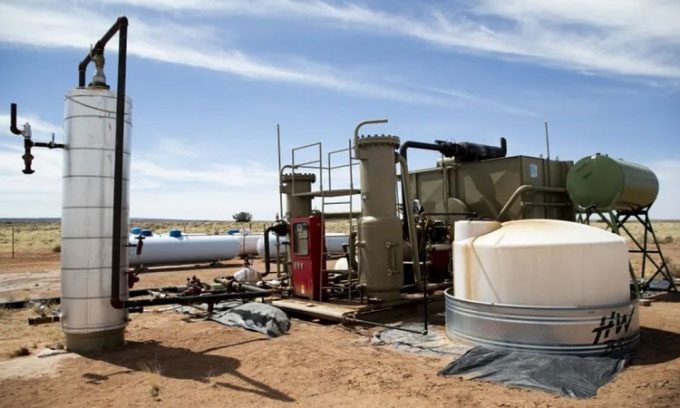Although helium is the second most abundant element in the universe, it is actually quite rare on Earth due to its tendency to be blown away by solar winds.
Not only used for balloons, helium has many surprising characteristics and applications around the world, according to IFL Science. Helium is produced through the natural decay of radioactive uranium and thorium, but this process takes billions of years. Currently, helium is collected from natural gas wells as a byproduct of natural gas processing.

Helium mining activities near Chambers, Arizona, USA. (Photo: AZ Central)
Due to helium’s low density, any amount of helium that escapes from a container or during production rises to the edge of the atmosphere and is blown away by solar winds. This is why helium is often described as truly the only non-renewable resource, according to the American Chemical Society. “It takes a very long time, many millennia, to create helium on Earth. It is the only element in the entire periodic table that escapes from Earth and flies out into space“, said Sophia Hayes, a chemist at Washington University in St. Louis.
Helium is very useful because it is extremely cold. It has the lowest boiling point of any element, at -268.9 degrees Celsius. This characteristic makes it an especially good choice for cooling superconducting magnets in magnetic resonance imaging (MRI) machines and even as fuel for rockets traveling into space. The Large Hadron Collider (LHC) in Switzerland requires about 120 tons of helium each week to maintain its operation, according to Bloomberg.
“Helium is a non-renewable resource. NASA and SpaceX need helium for rocket fuel. MRI machines require helium. The pharmaceutical industry relies on helium, and so does the Department of Defense“, said Bill Halperin, a physics professor at Northwestern University.
The U.S. federal helium reserve, established in 1920 for use in balloons, supplies about 40% of the world’s helium. Currently, this supply may be sold to the private sector in the coming months, impacting the helium supply chain. Only a few other countries have large helium reserves, including Qatar, Tanzania, and Algeria. Russia also plans to open a new helium plant, but the conflict in Ukraine may make that uncertain.
Estimates of the world’s helium reserves are quite abundant. In 2019, David Cole-Hamilton, an emeritus professor of chemistry at the University of St Andrews, estimated that the world has only enough helium for 10 more years unless countries make greater recycling efforts. The best estimate for the remaining usable helium is 100 to 200 years.





















































